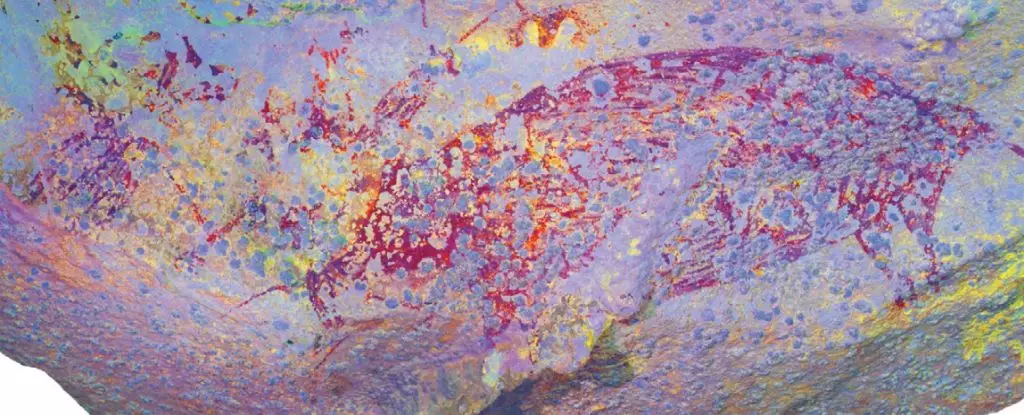Millennia ago, on the island of Sulawesi, Indonesia, humans created art by grinding up pigments and painting on the walls of a cave. Recently, scientists using advanced techniques have determined that these ancient depictions could be the oldest known examples of figurative and narrative art in the world, dating back at least 51,200 years. This narrative composition, showing human-like figures interacting with a pig, is now considered the earliest known surviving example of representational art and visual storytelling.
New Dating Techniques
Archaeologists have long been aware of Sulawesi’s numerous ancient cave paintings, but recent research has shed new light on their significance. By using a new dating method called laser-ablation uranium-series imaging, researchers were able to determine the age of these artworks with greater accuracy. This technique involves measuring the decay of uranium into thorium in the calcite coatings covering the paintings, providing insight into when they were created.
The discovery of these ancient cave paintings in Sulawesi has significant implications for our understanding of early human culture and art. The paintings depict human-like figures interacting with animals in composed scenes, indicating a rich culture of storytelling among early Homo sapiens. The presence of similar cave art in nearby regions like Borneo suggests that this area played a crucial role in the cultural history of our species. These findings challenge previous assumptions about the origin of figurative art and highlight the importance of visual storytelling in human development.
The dating of the cave paintings in Sulawesi has revealed that depictions of anthropomorphic figures and animal interactions appeared in this region during the Late Pleistocene period, long before similar art emerged in Europe. This indicates that a sophisticated culture of visual storytelling existed in the area, using scenic representations to convey stories about human-animal relationships. The faint pig depicted in one of the paintings may hold a significant place in human history, representing an early example of figurative art and storytelling.
Overall, the discovery of the oldest known figurative and narrative art in the world in the caves of Sulawesi is a groundbreaking development in the field of archaeology. By utilizing new dating techniques, researchers have been able to uncover a rich cultural history of storytelling among early Homo sapiens. These findings highlight the importance of visual art in human development and challenge existing narratives about the origins of figurative representation. The ancient cave paintings in Sulawesi provide a unique glimpse into the creativity and imagination of our ancestors, shedding new light on the evolution of art and culture.

Leave a Reply